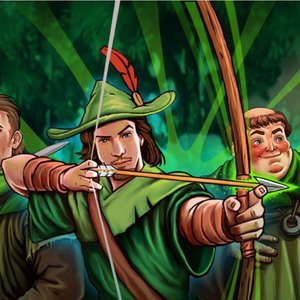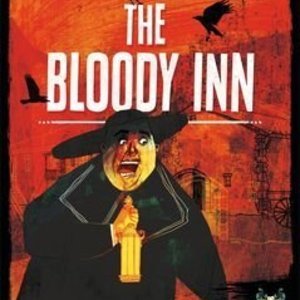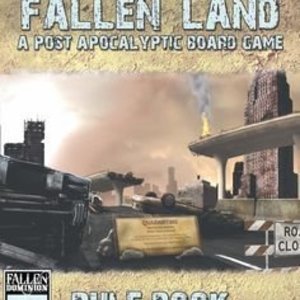
Fallen Land: A Post Apocalyptic Board Game
Tabletop Game
Set in a post-apocalyptic sci-fi setting, Fallen Land: A Post Apocalyptic Board Game is a hybrid...
Purple Phoenix Games (2266 KP) rated Aldabas: Doors of Cartagena in Tabletop Games
May 16, 2021
In Aldabas, players are (loose) urban planners in historic Cartagena attempting to build their city block with the most influential people in town. By drafting the most strategic door cards the winning player is they who scores the most points at the end of the game.
DISCLAIMER: We were provided a prototype copy of this game for the purposes of this review. These are preview copy components, and I do not know for sure if the final components will be any different from these shown. Also, it is not my intention to detail every rule in the game, as there are just too many. You are invited to download the rulebook, back the game through the Kickstarter campaign, or through any retailers stocking it after fulfillment. -T
To setup, place out 12 coins per player on the table, create the door offer dock, shuffle the Doors deck, and give each player five Doors and one Vault board. Each player then chooses one card from their hand to secretly place under their vault for endgame scoring. Place the shuffled Doors deck next to the Dock and deal one card to each space beneath the Dock. The game is now setup and ready to play!
On a turn the active player will take two actions. The actions are: Take Two Coins, Buy One Door, and Place One Door. Obviously, the first action has the player adding two coins from the supply to their play area (called the purse). To Buy One Door the player simply chooses one of the Door cards from the Dock area and pays its cost to the supply. The two cards on the leftmost spaces of the Dock are free, while the other cards cost coins according to their placement at the Dock. Once a card has been purchased, a new card is revealed and added to the rightmost space, sliding all other Doors cards to the left.
To Place One Door, the active player will choose a Doors card from their hand and place it on their block they are building in front of them. The Vault card acts as the bottom leftmost space, with the block encompassing a 4×3 grid above it and to the right (as shown below). Once the Door is placed, any special power it offers is triggered immediately, as are the Doors cards’ powers adjacently below and beside the newly placed Door card.
The catch here is that when placing Doors, it is illegal to place them orthogonally adjacent to Doors of the same color, and the spaces both below and to the left of the placed Door cannot be empty. Essentially, Doors need to be placed in a cone starting from the Vault. Play continues in this fashion with players taking turns until either the supply runs out of coins, a player fills up their 4×3 grid with Doors, or the Dock cannot be refilled because the Doors deck is empty. Then final scoring occurs, which is based on individual cards as well as any suit-specific bonuses offered.
Components. Again, this is a prototype copy of the game, so final components may be different in many different ways upon a successful Kickstarter campaign. That said, this game looks GORGEOUS on the table. The colors are all super vibrant, and the great knockers really pop. Excellent theme and art here carry an already-spiffy game. The game is basically a bunch of cards and some coin tokens. They are all fine quality, especially for a prototype. I have no issues at all. I love the way this looks!
So I love the way it looks, but do I love the way it plays? I think it’s a good little game. It reminds me a little of Viceroy with the color combinations and placement rules. While Viceroy is good, Aldabas is much better in almost all ways. Aldabas plays quicker and has more easily digestible rules. If you check Viceroy’s profile on BGG you will see that many users enjoy it, and it currently sits just above rank 1000. So when I say Aldabas gives a similar feel but delivers a more enjoyable game experience, I expect Aldabas to perform better in the BGG rankings, if that’s your thing.
The special powers on the Doors cards, though I didn’t really mention them, range from VPs at game end, to moving coins to and from the Vault onto Doors to make them more valuable, to gaining coins from the supply or stealing them from other players, to offering discounts on purchasing Doors from the Dock. There are some other fun rules used in scoring, but I will let you experience those on your own with your backed copy.
So final word from me on this one is that I highly recommend it and hope you give it a shot. It offers lots of strategic game play with a medium-sized table footprint, but boy it looks great on that table! Turns are fast, and everyone is in the game until end scoring, so I never felt there was a runaway winner issue. If you are like me, you will definitely want to be adding this to your collection. Big recommendations from me, I know you will enjoy it.
Purple Phoenix Games (2266 KP) rated Robin Hood: Hero of the People in Tabletop Games
Jun 13, 2019
Disclaimer: This review is for a Kickstarter preview. We are not being paid for this preview, but we were sent the game from the designer. Components and rules may be changed before the product and project is finished. -T
As this game is not yet in full production, I will paraphrase the rulebook here for you so you can get an idea of how the game plays. Then I will give my opinions on this little card game.
Robin Hood: Hero of the People is a one-player card game that is played over three phases. To win the game you must have all Merry Men and Maid Marian recruited and active, while the bounty on your head is less than 500. You lose by seeing the bounty at or above 1,000 or by playing through the entire deck of Story Cards without winning. You may set the difficulty level by choosing how much you would like the bounty to start at before you begin play (100, 200, or 300). The rulebook instructs you how to setup the game using several piles of cards to create the play area. Deal yourself three Loot (skill) cards and the game is on!
The first phase of the game is Robbing from the Rich. During this phase you draw three (or more depending on other cards currently in play) Loot cards from the big deck. These cards consist of different skills to use later – like Archery, Strength, Swords, etc. You will also find Gold and Influence cards. These Loot cards are needed to recruit Maid Marian and all the Merry Men, as well as used for negating powerful negative Story Card effects in the third phase of the game. Once you have drawn your Loot cards, you may play up to three of them into your Inventory in front of you (unless a card instructs you otherwise). Only your cards in the Inventory will be used to recruit and rescue Merry Men, or be affected by Story Cards.
You have placed your skills and bargaining cards in the Inventory. It is now time to use them to recruit your Merry Men! The second phase is the Actions phase. You have several options of actions to take on your turn, but you may only take one action. One option is to recruit Merry Men characters. Each character card begins the game face-down in a grid. The card backs show the recruitment costs (paid in skills) for each. They all have different skill cost combinations on each back so you must choose your Inventory cards carefully in the first phase. During the game some characters may become jailed through the Story Cards. Also on the backs of the character cards are the costs to rescue your friends from jail, and the costs are different than the recruitment costs. This throws a wrench into your plans as you are trying to recruit and protect all your Merry Men, just to have them thrown in jail and made unavailable to you. Curse you, Sheriff of Nottingham!
Also during this phase, in addition to recruiting and rescuing your allies, you may purchase King Richard cards, Sherwood Forest cards, or decrease your bounty. King Richard cards are very very costly (requiring up to nine skills to purchase!) but also very powerful and very helpful to your cause. There are three of these in the game and when you have used one you must discard it out of the game. Do you have an abundance of skills and Loot cards to use? Would you like to protect your Merry Men from becoming jailed? Well during this phase you may also purchase Sherwood Forest cards to begin building a hideout. It costs two Strength skills, but once you have acquired all six Sherwood Forest cards, most of the Merry Men are protected from being jailed. Huzzah! The final option you have in this phase is spending any three Loot cards from your Inventory to reduce your bounty by 100.
The third and final phase is the Story Card phase. During setup you are instructed to separate this deck into two piles, shuffle them independently, and place the Story Cards in set one on top of the story cards in set two. Set one cards are annoyances that can bleed you of skill cards or raise the bounty on your head. Annoying! The cards in set two are far worse, as they will jail your unprotected Merry Men and set you back further from victory… also whilst raising your bounty. Super annoying!! Curse you again, Sheriff!!
If no win or lose conditions have been met at this time, you will return to the first phase with this additional rule: switch your active character (you start the game with Robin Hood) with another character you have recruited in the grid. Each character has a different special ability to be used on your next turn as well as a different set of skills printed on the face that you may use as discounts for recruitment, rescues, and purchasing of King Richard and Sherwood Forest cards. Example: Much the Miller shows 1x Sword and 1x Strength. You can use his skills as a discount to purchase a Sherwood Forest card by spending just one Strength card from your Inventory. Time to stick it to the Sheriff!
So how does it all shake down? Overall I say the game is really good. It is unfinished, and has not yet made it to Kickstarter, and I suspect that has something to do with any drawbacks I have experienced. Upon reading the provided rulebook and attempting Game 1, I had several rules questions. Rodney was quick to provide answers and it made the game so much more playable and enjoyable. Since it is a solo game only, every decision you make directly impacts how the game is played (duh, right?). There’s nobody else to mess with your plans, nor help them succeed. There’s no AI or ghost player. Just you versus the game. I have played this many times now on different difficulty levels and have won and lost on each. It would seem balanced, however…
There are a few strategies I attempted to use on my different plays to see how they might add to the complexity and change the results. I noticed that I won more when I completely ignored Sherwood Forest and King Richard’s cards. Yes, one of the King Richard cards reduces the bounty by quite a bit, and that’s just in one turn, but the cost is so mighty that I rarely found them enticing enough to pull the trigger. Same goes for Sherwood Forest. Though the cards cost a paltry two Strength, I found that I needed those Strength cards to recruit or rescue my Men and could not justify spending two per card (and six total cards to build the hideout) for that protection. Your play style may vary, and I am itching to play again to try new things out. Maybe I’m wrong about Sherwood Forest. I think that’s a really great trait for a game – to have its players thinking about different strategies while not playing, and just waiting for when they can play again.
I have to say, I am very excited to see this go to Kickstarter, and to learn what Rodney has in mind for improvements to the components, or rule tweaks, and the almighty stretch goals. I might be backing this one, even though I have a great working version of it now…
Purple Phoenix Games (2266 KP) rated The Bloody Inn in Tabletop Games
Feb 12, 2022
The Bloody Inn is a card-drafting, hand management, horror game of recruiting accomplices and having them carry out dastardly deeds to secure the most money at the end of the game. In it, players take on the roles of one of the inn’s staff members and control pawns in their evil schemes in order to swindle and kill for mountains of francs (it’s set in France, pre-Euro).
To setup, place the main board on the table, give each player the components of their color choice, two Peasant cards, a 10 franc (f) check, and a player aid card. The “traveler deck” is assembled and shuffled per the rules, and placed on the Entrance side of the board. Players choose one room to place a key token in their color, and several gray neutral key tokens are placed in other rooms. Unsuspecting travelers will be staying in these rooms each night. Per the rules, the greediest player is given the first player card and the mischief may begin!
The Bloody Inn is played over several rounds, and each round has players completing three phases: Welcome Travelers, Player Actions, and End of Round. Players will Welcome Travelers to signify the start of the round by the first player drawing one card from the deck at a time and choosing in which room they will be placed.
After Travelers have been welcomed and turn in for the evening, the second phase may begin: Player Actions. In turn order players will be able to perform two actions each round. Players may choose from five different actions, and actions can be repeated for the second action of the round. Players may Bribe a Guest by discarding cards from hand equal to the printed value on the target card’s front. Initially all players simply employ the two starter Peasants, so Bribing is only performed on cards that show a value of 0-2. When a player Bribes a guest, they essentially spend cards from hand to recruit the new guest to their employ. These new employees (accomplices) are then available to be used on future actions. One or two Peasants may also be Bribed from the bistro, adding to a player’s hand of usable human resources.
A player may instead choose to Kill a Guest by similarly discarding the appropriate number of accomplices and adding the freshly-slain guest to their tableau, face-down. The card backs feature a coffin with their “rank” (action number) printed on it. Corpses normally cause no issues, but they will need to be buried under an Annex in order to collect the money in their pockets. Players may use an action to Build an Annex by discarding the appropriate number of accomplices and using a card from hand to build and staff the Annex. Annexes can be used for the action printed on the card bottom, and/or as a housing for corpses, with the Corpses being sent to any player’s Annex via the Bury a Corpse action. Discard the requisite number of accomplices to bury a corpse, and avoid suspicion from the Law.
If none of these actions are attractive to the player, or if they simply wish, they may instead Pass and launder money from the village notary. To do this, either reduce the number of francs from the Wealth Track on the main board in order to gain a 10f check, or turn in a check for 10f on the Wealth Track.
Once all players have taken their two actions, the End of Round is performed. Firstly, if any Travelers remain belonging to the Police type (signified by pistol icons on the top of the card), they will conduct an investigation, finding any unburied corpses. Should a corpse be found in this way, the owning player will need to pay 10f for the local undertaker to dispose of the body respectfully. This not only costs the player 10f, but also the amount of money that could have been gained if they had only buried them or dealt with the Police traveler prior. Next, the Travelers who remain all wake up feeling refreshed and leave the inn by being placed in the discard pile. Once the board has been cleared of all Travelers, accomplices must be paid their wages for their help. For each accomplice in hand, the players must pay 1f from the Wealth Track.
Play continues in this fashion until the main Traveler deck has been depleted twice. Then, players add up their francs and the player with the most in francs and checks is the winner, and just the greatest little murderer/robber/briber in all the land!
Components. This game really has a modest amount of components, but they are all similarly great quality. The main board acts as the inn’s room display, the Wealth Track, AND the bistro (where Peasants are discarded, as opposed to being placed in the normal discard pile). I love when components pull double or triple duty. That said, the player aids not only remind the players of the phases and actions from which they may choose, but it also provides the player with a starter Annex that can be used to bury their first corpse! HOW COOL IS THAT?! However, the greatest thing that stands out in regards to the components is the overall look and feel of the game. The character artist for this one is Weberson Santiago, and he has also illustrated games such as the new Quest (the new version of The Resistance: Avalon), Coup, and the new Whirling Witchcraft. I adore his art style, even though I shouldn’t. My typical preference of character art is semi-realism (like that of Kwanchai Moriya), but this style is really unique and perfectly applied to the theme. Great matchup of artist and game here. I do have one silly wish for this game: PLEASE change the player colors. I mean, I am so tired of having the choice between red, blue, green, and yellow. Take a Cue from my good friend Scott Brady and use one of the more interesting color choices. I mean, even to fit in with the theme here a more appropriate palette could include a brown, black, orange, and yellow or something. Be bold!!
I knew right away that this was a great game for me. Yes, the theme is super dark and macabre, which is rare for me to enjoy, but I would only play this with adults anyway so I am unbothered by it. However, the puzzle that lies within this box is one that I thoroughly enjoy solving every round. What I neglected to mention up top is the fact that when actions are taken (Bribing, Killing, Building Annexes, and Burying Corpses) if you happen to have certain card types in hand, then the cost of discards is reduced by the number of cards present. For example, if I were to Bribe a Police card from the rooms in my first action, they have an affinity for killing (messed up, I know) and will thus help me to perform a Kill action on the next turn by reducing the number of accomplices I would need to discard for that action. Side benefit: by taking the Police Travelers off the board, they then will not perform their investigations in the morning.
Another aspect I truly enjoy about The Bloody Inn is that many cards have that dual-purpose mechanic I appreciate. The player aid is also an Annex. Brilliant! Many of the Annex cards can also offer one-time or recurring powers. It’s just so satisfying to grab cards that can combo well with each other in order to fulfill your evil plans. Every card is important, and when they can offer more than one benefit, I am a happy gamer.
I cannot express how happy I am to have decided to purchase this one. I have seen the BGG ratings and rankings, but always thought I wouldn’t like it due to its very adult theme, but boy was I wrong! This is one of the best games I have played recently and I hope to even bling it out a bit, maybe even with new player colors like I suggested earlier. Laura and my wife were able to join me for this one and they agree with me – this one is excellent and definitely worth consideration into anyone’s collection. Purple Phoenix Games gives this one a dastardly 15 / 18. Yeah, it’s perfect for Halloweentime, but also for ANY time. If you are looking for something a little grim and grisly with lighter rules and lots of interesting choices, you need to check out The Bloody Inn. Grab lots of Police cards and go on a killing spree for me!

ISS Vanguard
Tabletop Game
ISS Vanguard is a 1-4 player co-operative, campaign Board Game. It will bring players right into...
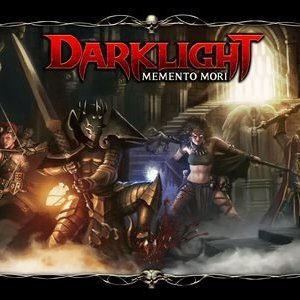
Darklight: Memento Mori
Tabletop Game
Darklight: Memento Mori brings old-school dungeon crawler action with original dark-gothic settings...
Boardgames
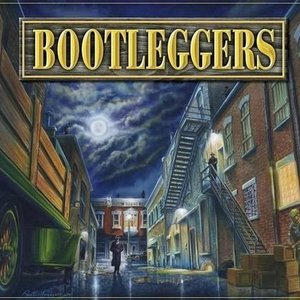
Bootleggers
Tabletop Game
It's January 1921. Prohibition has been in effect for a year, and it looks like the 18th Amendment...
Boardgames MafiaGames ProhibitionGames
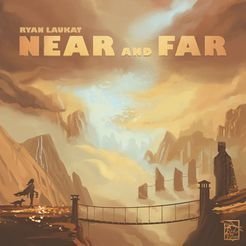
Near and Far
Tabletop Game
Four wanderers search for the Last Ruin, a city that legends say contains an artifact that will...
Boardgames StoryGames LaukatGames
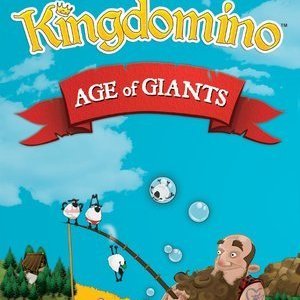
Kingdomino: Age of Giants
Tabletop Game
The giants have come to Kingdomino! And they will crush all your precious buildings if you can't...
BoardGames Expansions 2018Games

